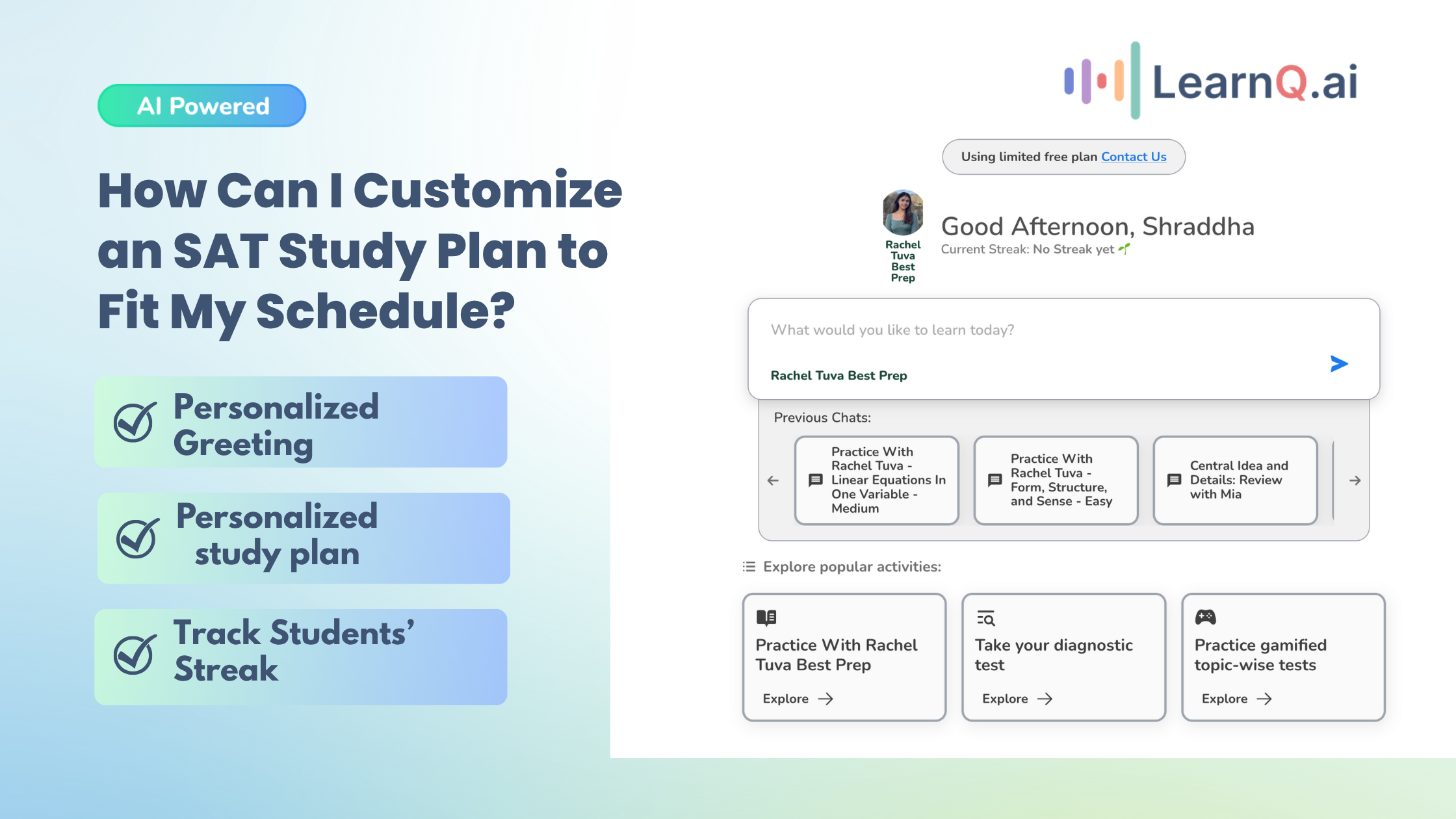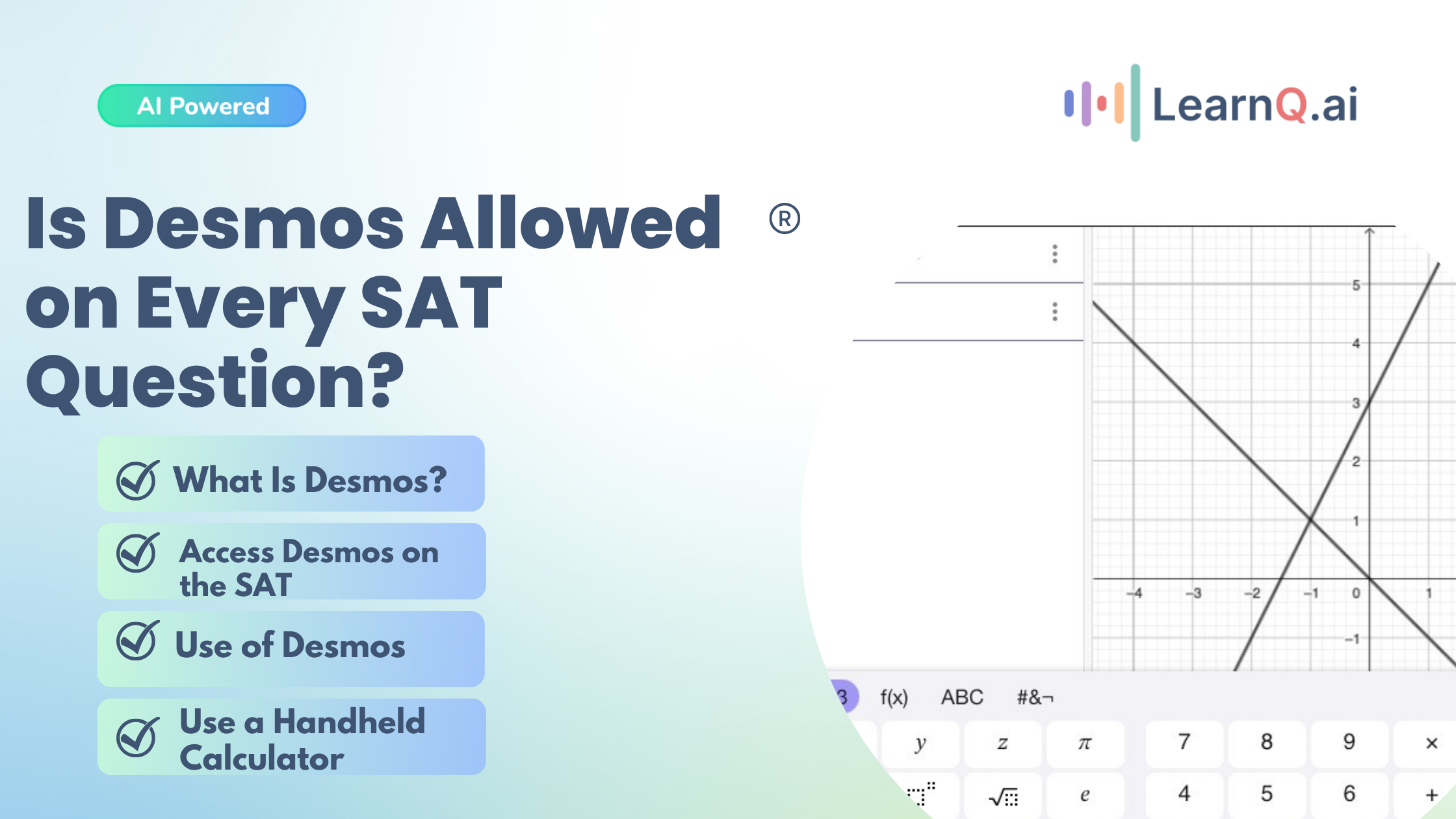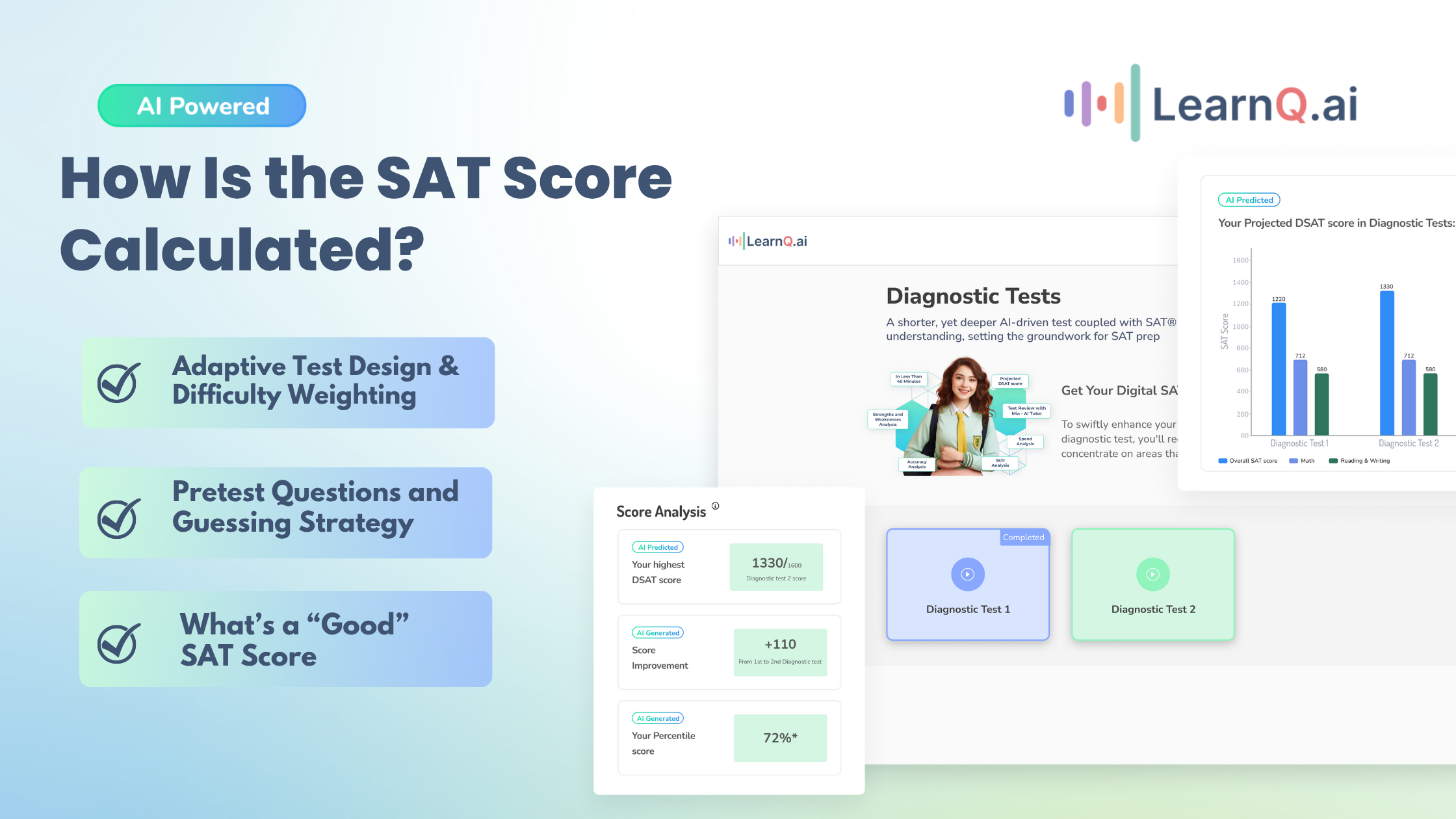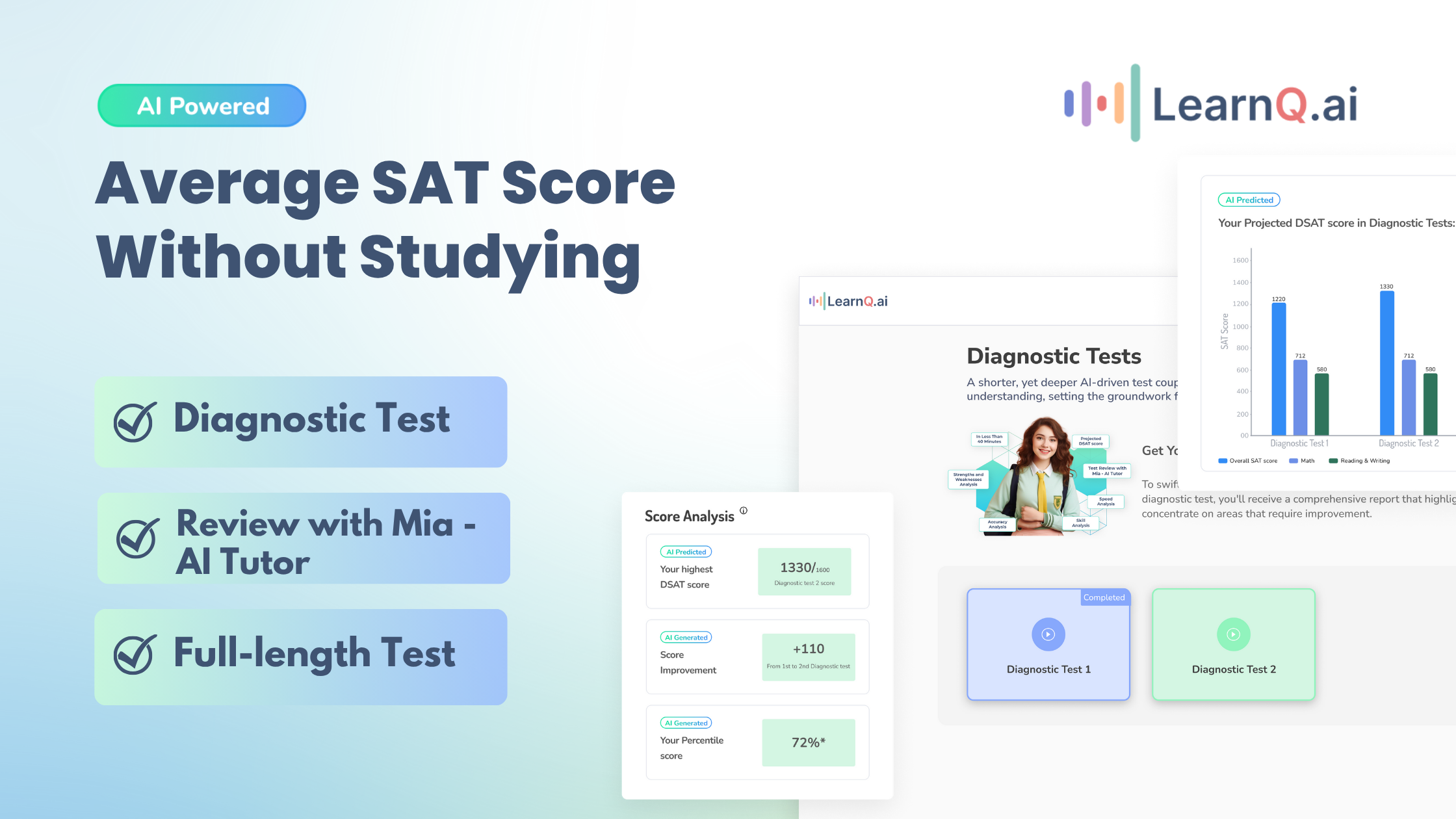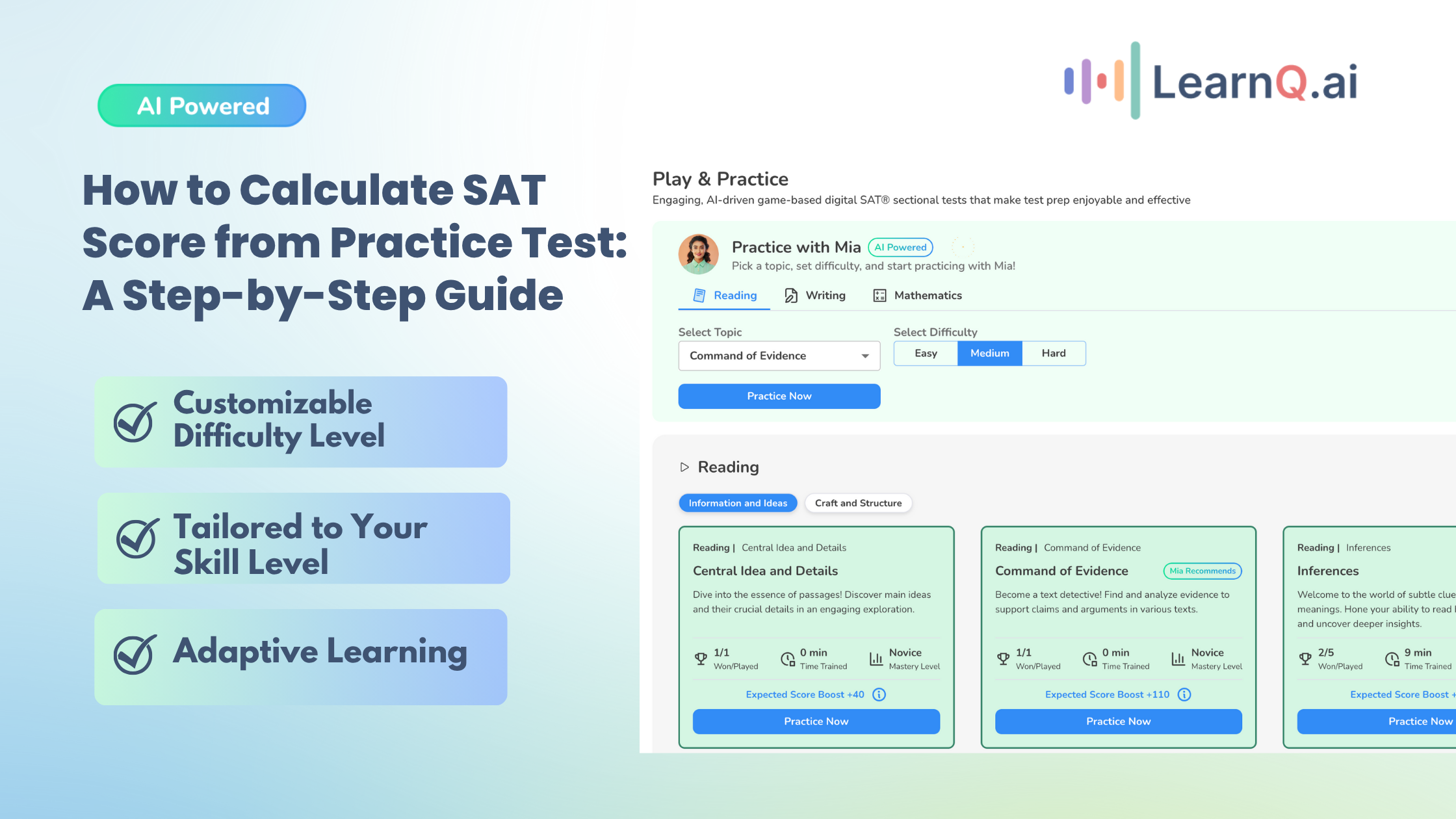SAT can often appear intimidating and perplexing to students. However, students can demonstrably improve their overall SAT scores by employing straightforward strategies and techniques specifically tailored to the Writing and Language section.
While the Writing Test may have previously presented a significant obstacle to higher education, it can be transformed into a valuable stepping stone with the appropriate preparation.
This revised version of the test may initially seem unfamiliar; however, this guide will equip you with the knowledge and strategies to confidently approach and conquer the Digital SAT Writing section, regardless of whether you are facing the new or updated format.
Let’s start by understanding the significance of the SAT Writing Test in College admissions.
Significance of SAT Writing Test
Your college dreams hinge on more than just math whiz-kid skills. Top universities value well-rounded applicants, and the SAT Writing Test is your chance to showcase your communication prowess.
The SAT Writing test assesses your ability to analyze, revise, and edit written content – a crucial skill for academic success. Acing this section can boost your overall SAT score and demonstrate your readiness for college-level writing. A strong score can unlock scholarship opportunities, making that dream college even more attainable.
Structure and Content of Digital SAT Writing Test
The SAT Reading and Writing section throws short reading bits (or sometimes two paired together) at you, followed by just one multiple-choice question. These questions test your skills in four areas:
- Craft and Structure
- Information and Ideas
- Standard English Conventions
- Expression of Ideas
To help you manage your time, the test groups similar questions together, starting with the easier ones. It is split into two parts, covering all four skill areas.
What You’ll Read:
Expect short passages (25 to 150 words) about anything from stories to science articles.
What the Questions Ask:
The questions test your skills in four main areas:
- Information and Ideas: This tests your ability to understand what you’re reading, analyze the information, and figure things out based on the text and charts (like tables, bar graphs, and line graphs). You’ll also need to be able to find important details, explain what they mean, and see how they all fit together.
- Craft and Structure: This test will assess your reading skills, vocabulary knowledge, and ability to analyze and connect ideas. You’ll need to understand how to use “high-utility” words in the right place, figure out the purpose of the writing, and see how different pieces of writing that discuss similar things relate to each other.
- Expression of Ideas: This tests your skill at making writing more precise and stronger. You’ll need to be able to spot ways to improve the writing, like fixing mistakes or making it easier to understand.
- Standard English Conventions: This tests your editing skills for grammar, ensuring your writing follows the basic rules of English. This includes sentence structure (how the words are ordered), correctly using words and punctuation marks like commas and periods in the right places.
What Strategies You Can Adopt to Ace Your SAT Writing Section
When you are tackling the new digital version, these strategies will be your trusty allies:
- Brush Your Grammar Skills: Brush up on your grammar fundamentals. Punctuation, subject-verb agreement, and sentence structure are key players in this game.
- Build Strong Vocabulary: A strong vocabulary is your secret weapon. The more precise your understanding of words, the easier it is to identify awkward phrasing or unclear meaning.
- Read: Become a master of close reading. Pay close attention to sentence flow, logic, and overall coherence.
- Learn to Eliminate: Don’t get bogged down by answer choices that seem off. Use the process of elimination to narrow down your options to the most effective revisions.
- Learn to Manage Time: Manage your time wisely. Allocate a specific time for each passage and question to ensure you don’t get caught short on the clock.
By following these strategies and dedicating yourself to focused preparation, you can transform the SAT Writing Test from an obstacle into an opportunity.
LearnQ.ai is Powered by VEGA AI—Is your Institute Next?
Give students a Duolingo-style test-prep platform with Shopify-level customization for tutors and institutes.
Understanding Digital SAT Writing Section
We understand the SAT Writing Test’s content structure and strategies, but what will you face on test day?
Let’s discuss the digital format, the types of questions you’ll encounter, and the grammatical knowledge you need to succeed.
Question Types
The digital SAT Writing Test throws various multiple-choice questions your way, all designed to assess your editing prowess.
Here’s a breakdown of the main types:
Here, we’ll get into the specific areas within the Reading and Writing section, particularly focusing on “Expression of Ideas” and “Standard English Conventions.”
Expression of Ideas
This category assesses your ability to develop, organize, and effectively communicate ideas within a text. It includes questions on improving the clarity and flow of writing.
1. Rhetorical Synthesis
Overview: Rhetorical synthesis involves combining multiple pieces of information to create a coherent argument or narrative. This skill is crucial for understanding how different elements of a text contribute to its overall purpose.
Sub-Topics:
- Combining Information: Integrating various pieces of information from different parts of the text to support a central idea.
- Purpose and Focus: Ensuring that all parts of the text contribute to its main purpose and are focused on the central theme.
- Logical Flow: Arranging ideas in a logical sequence to enhance the reader’s understanding and maintain coherence.
Explanation: Students must demonstrate their ability to synthesize information from different sections of a passage, ensuring that all parts contribute to a unified argument or narrative. This involves recognizing the main idea, supporting details, and how they are logically connected.
2. Transition
Overview: This subtopic focuses on using transitional words, phrases, and sentences to create smooth connections between ideas and sections of text.
Sub-Topics:
- Transitional Words and Phrases: Using words like “however,” “therefore,” and “for example” to connect ideas logically.
- Sentence Transitions: Crafting sentences that bridge ideas within a paragraph.
- Paragraph Transitions: Creating smooth transitions between paragraphs to maintain the flow of the text.
Explanation: Effective use of transitions helps maintain a passage’s logical flow and coherence. Students must understand how to use transitional elements to link sentences and paragraphs, ensuring the text reads smoothly and logically.
Standard English Conventions
This category tests your grammar, usage, and punctuation knowledge, as well as your ability to edit and correct errors to conform to standard English conventions.
1. Boundaries
Overview: This sub-topic deals with understanding and correctly applying the rules that define the boundaries within sentences, including punctuation and clause boundaries.
Sub-Topics:
- Sentence Boundaries: Identifying and correcting run-on sentences and sentence fragments.
- Comma Usage: Proper use of commas to separate clause items in a list and to set off non-essential information.
- Semicolons and Colons: Correct use of semicolons to link closely related independent clauses and colons to introduce lists or explanations.
Explanation: Students must demonstrate their ability to punctuate sentences correctly, ensuring that ideas are clearly separated and that the text is grammatically correct. This includes recognizing and fixing run-ons and fragments and using commas, semicolons, and colons appropriately.
2. Form, Structure, and Sense
Overview: This area focuses on the overall structure and sense of the text, ensuring that it adheres to standard grammatical rules and logical flow.
Sub-Topics:
- Verb Forms: Correct use of verb tenses and forms, ensuring subject-verb agreement.
- Pronoun Usage: Proper use of pronouns, ensuring clarity and agreement with antecedents.
- Sentence Structure: Understanding and applying rules of parallel structure, avoiding misplaced modifiers, and ensuring clear and logical sentence construction.
Explanation: Students need to ensure that their writing adheres to standard English grammar rules, including proper verb tense usage, pronoun clarity, and maintaining a logical and clear sentence structure. This involves editing sentences to fix grammatical errors and improve readability.
Tips for Preparation
- Practice Regularly: Engage in regular practice using sample questions and full-length practice tests.
- Focus on Weak Areas: Identify and focus on areas where improvement is needed.
- Use Quality Resources: Utilize resources like LearnQ.ai for targeted practice and explanations.
- Understand the Format: Familiarize yourself with the digital format and practice on a computer or tablet.
By mastering these areas, students can improve their performance on the Digital SAT Writing Test, ensuring a comprehensive understanding and ability to perform well.
Enhance your Digital SAT study routine with AI-driven insights and personalized practice tests.
Grammar Fundamentals
The digital SAT Writing Test isn’t a grammar quiz, but a solid understanding of these core concepts will empower you to tackle those editing questions:
- Sentence Structure: Master the basics. Identify independent and dependent clauses.
- Punctuation Power: Commas, colons, semicolons – knowing when and where to use them is crucial for clear writing.
- Part of Speech: Nouns, verbs, pronouns, adjectives, adverbs. Learn to identify them all! This understanding will help you recognize awkward phrasing and suggest more appropriate word choices.
- Verb Tenses: Past, present, future – ensure the tenses within a sentence are consistent and match the intended meaning.
Most Important Part: Familiarizing with Digital Interface
Familiarising yourself with the digital format is very important. It might seem intimidating, but there is nothing to worry about—the interface is designed to be user-friendly.
Here’s what to expect:
- Passage Navigation: You can easily scroll through the reading passages and highlight relevant sections.
- Answer Marking: Choose your answer by simply tapping on the desired option.
- Review and Revisit: Unlike the paper-and-pencil test, you can revisit previously answered questions within a specific section before time runs out.
You can take practice tests from online platforms like LearnQ.ai to familiarise yourself with the digital interface beforehand. This will help you feel comfortable and focused on the actual writing content on test day.
You can confidently tackle the SAT Writing Test by understanding the question types, mastering key grammar concepts, and embracing the digital format.
Let’s explore some strategies to help you master this crucial section!
Time Management and Question Strategies
As you approach the digital SAT Writing Test, a significant challenge awaits. However, fear need not be a factor.
Below, we will equip you with the knowledge and strategies to effectively manage your time and approach test questions strategically, ultimately leading to a successful outcome.
Tips for Time Management During the Test
In a timed test, the clock can feel like your enemy, but you can transform it into your ally with a few time-management tips.
- Be the Master of Minutes: Allocate a specific time for each passage and question. This ensures you don’t get bogged down and have enough time to review your answers strategically.
- Leave No Question Behind (But Not for Too Long): If a question stumps you, don’t waste precious minutes. Mark it for review and move on. You can come back later if time permits.
- Utilize the Digital Edge: Remember, unlike the paper-and-pencil test, you can revisit previously answered questions within a section before time runs out. This provides valuable flexibility in managing your time.
Mark and Review | Digital Watch |
The Value of Reading Questions Carefully and Not Rushing Responses
Haste makes waste, especially in the digital SAT Writing Test. Here’s why careful reading and thoughtful response selection are key:
- Read Carefully: Read each passage attentively, paying close attention to details, sentence structure, and overall flow. Jumping to answer choices without fully understanding the context is a recipe for errors.
- The Power of Preview: Quickly scan the question stem before getting into answer choices. This helps you understand what they’re asking you to identify or improve.
- Beware of incorrect Options: Multiple-choice tests love throwing in tempting but incorrect answer choices. Read each option carefully and eliminate those that do not address the question or improve the writing.
- The ‘No Change’ Paradox: Don’t automatically assume the “No Change” option is wrong. It might be the best choice! Evaluate each answer choice critically and only select a change if it improves clarity, grammar, or overall flow.
Remember, the SAT Writing Test isn’t about speed but precision and thoughtful analysis. By managing your time effectively, reading carefully, and approaching answer choices strategically, you’ll be well on your way to conquering this section and boosting your overall SAT score.
Also Read, Erica Meltzer’s Digital SAT Reading and Writing Test Book
Mastering Grammer and Understanding its Usage
We’ve armed you with time management tactics and question-busting strategies, but true victory on the digital SAT Writing Test hinges on mastering the language.
Let’s learn some key grammar and usage concepts to make you a grammar gunslinger!
Understanding Punctuation And Semicolons
Semicolons might seem like the fancy cousins of the comma, but they serve a vital purpose. They can connect two independent clauses without the need for a coordinating conjunction (like “and” or “but”).
For example: “The audience roared with approval; the performance had been a resounding success.”
Understanding semicolons can help you improve sentence flow and avoid comma splices, a common grammar pitfall.
Dependent vs. Independent Clauses
Sentences are built on clauses, but not all clauses are created equal.
Independent clauses can stand alone as complete sentences, while dependent clauses rely on an independent clause for meaning.
For example:
- “When the sun sets (dependent clause), the fireflies begin to twinkle.”
- The wind howled through the trees, and the rain lashed against the windows. (This sentence has two independent clauses connected by a comma and the coordinating conjunction “and.”)
Recognizing dependent and independent clauses is crucial for identifying sentence structure issues and making effective revisions.
Impact of Sentence Length on Clarity and Conciseness
Clarity and conciseness are your watchwords. While complex sentences can showcase your vocabulary, a barrage of long, convoluted sentences can leave your reader lost.
Vary your sentence length to keep your writing engaging. Short, punchy sentences can add emphasis, while well-constructed, longer sentences can demonstrate your understanding of complex ideas.
The Importance of Maintaining Consistent Verb Tenses
Verb tense consistency is the cornerstone of clear communication. Ensure your verbs agree in tense throughout the passage, reflecting the intended timeframe of the writing.
For example: “She walked (past tense) to the store and bought (past tense) a loaf of bread.” This is grammatically correct because both verbs are in the past tense.
However, “She walks (present tense) to the store every day and buys (present tense) a loaf of bread” is also correct because both verbs are present tense.
Strategies for Employing Transition Words Effectively
Transition words help connect ideas, guide the reader through your thought process, and ensure smooth flow.
Words like “however,” “furthermore,” and “consequently” can transform your writing from a jumble of ideas to a cohesive argument. Mastering various transition words will elevate your writing and impress the test graders.
By honing your understanding of these grammar and usage concepts, you’ll be able to analyze passages keenly and identify improvement opportunities.
Remember, the SAT Writing Test isn’t just about identifying errors; it’s about demonstrating your ability to craft clear, concise, and well-structured writing. So, practice these concepts, and watch your SAT writing skills soar!
Want to increase your SAT score? Read this article.
Answer Selection Tactics
You’ve sharpened your grammar sword and mastered time management, but one hurdle is selecting the best answer.
Here are some strategies to help you navigate the answer pool and emerge victorious.

Effectively Apply Elimination Technique For Wrong Answers
Not all answer choices are created equal. Here’s how to strategically eliminate the duds and narrow down your selection:
- If an answer choice contains a glaring grammatical error, punctuation mistake, or awkward phrasing, toss it out! You’ve honed your grammar skills – use them to your advantage.
- Does the answer choice make logical sense within the context of the passage? If it introduces irrelevant information or contradicts the overall flow, eliminates it.
- Sometimes, answer choices might be grammatically correct but not truly address the question. Don’t be fooled by surface-level similarity – choose the option that directly tackles the issue raised in the question stem.
By employing these elimination techniques, you’ll significantly improve your chances of selecting the best answer, even when faced with multiple tempting options.
Approach to Handle Difficult Questions and When to Guess
The digital SAT Writing Test might throw some curveballs your way. Here’s how to handle tricky questions and navigate guessing:
- Take a Deep Breath: Don’t panic if a question stumps you. Move on and come back later if time permits. Sometimes, revisiting a question after tackling others can give you a fresh perspective.
- Educated Guesses: If you’re truly stuck, employ an educated guess. Eliminate the answer choices you know are wrong, and choose the most logical based on the passage and your understanding of grammar and usage.
- The Power of Process of Elimination: Even if you can’t definitively pick the best answer, eliminate the most obviously incorrect choices. This increases your chances of landing on a decent option if you have to guess.
By incorporating these answer selection techniques into your test-taking strategy, you’ll be well-equipped to tackle even the most challenging questions confidently.
Remember, a thoughtful approach, strategic elimination, and a touch of educated guessing can greatly maximize your score on the digital SAT Writing Test.
Also Read, Do’s and Don’ts of Digital SATs
Sharpen Your Skills for the Digital SAT Writing Test with Practice Tests
You’ve acquired the knowledge and strategies to conquer the digital SAT Writing Test. However, we all need the practice to refine our skills and build confidence.
Here’s where LearnQ.ai steps in, offering the perfect training ground for the SAT writing test.
Practice Test by Concept:
- Expression of Ideas:
- Rhetorical Synthesis: Start Your Practice Test
- Transitions: Start Your Practice Test
- Standard English Conventions:
- Boundaries: Start Your Practice Test
- Form, Structure, and Sense: Start Your Practice Test
Do you have a doubt? Or stuck somewhere? Ask Mia!
Embrace Personalized Learning with Mia, Your AI Tutor:
- Mia AI Tutor: LearnQ.ai goes beyond rote memorization. Our innovative Mia AI Tutor personalizes your learning journey, providing real-time feedback, answering questions, and guiding you through challenging concepts. With Mia by your side, you’ll never feel alone on the path to SAT Writing mastery.
Have a doubt? Ask Mia Right Away!
Also Read How to Embrace AI in Classroom.
LearnQ.ai is powered by VEGA AI—Is your institute next?
Offer students a Duolingo-style test-prep platform with Shopify-level customization for tutors and institutes.






LearnQ.ai: Your Gateway to SAT Writing Success
Don’t settle for generic test prep solutions. LearnQ.ai offers a comprehensive and personalized approach to conquering the digital SAT Writing Test. With our targeted practice tests, insightful diagnostics, and the invaluable guidance of Mia, your AI tutor, you’ll be well-equipped to achieve your academic goals and unlock your full writing potential.
Visit LearnQ.ai today and embark on your journey to digital SAT Writing victory!


